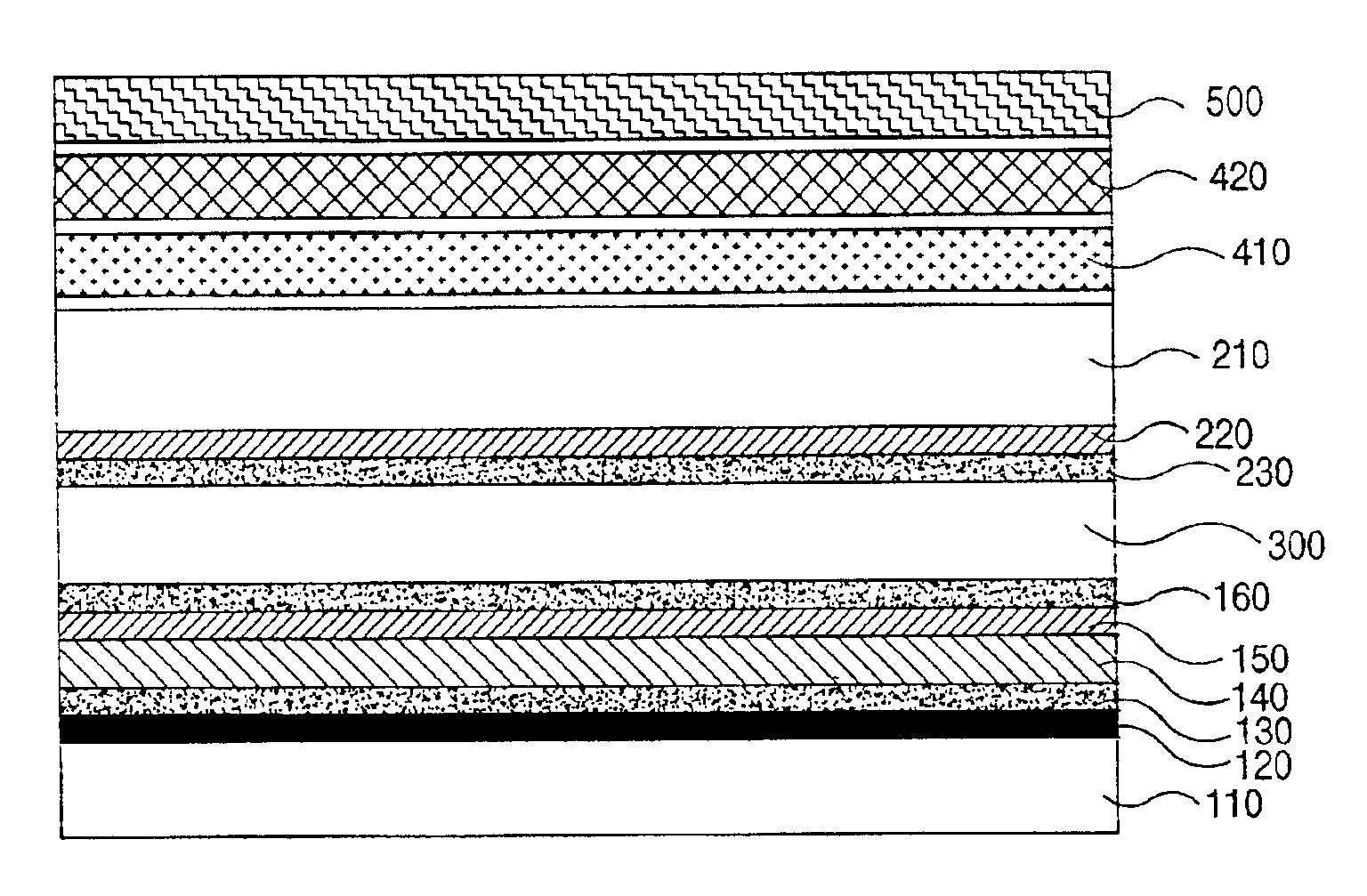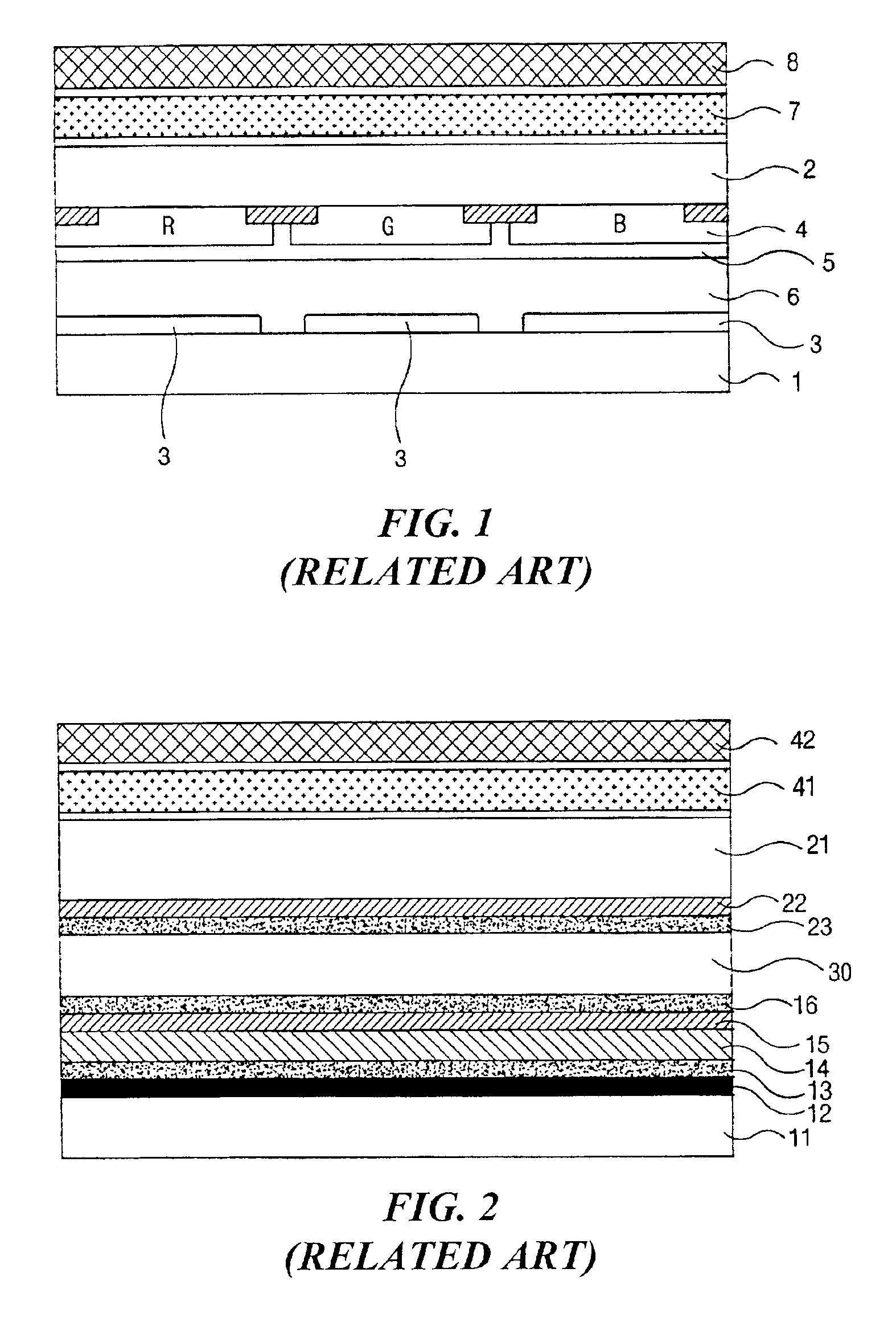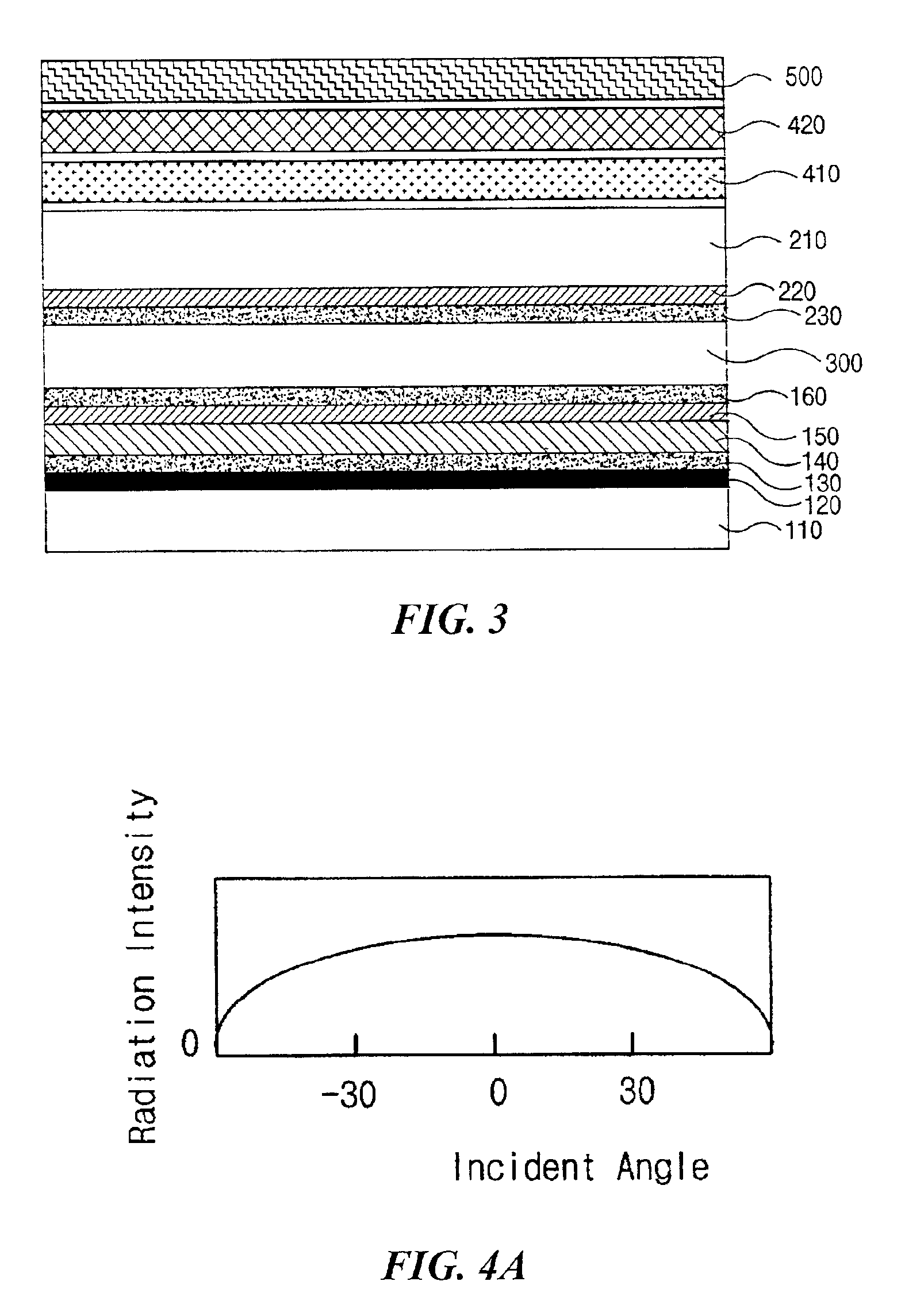Reflective liquid crystal display device
- Summary
- Abstract
- Description
- Claims
- Application Information
AI Technical Summary
Benefits of technology
Problems solved by technology
Method used
Image
Examples
first embodiment
[0044]FIG. 3 is a cross-sectional view of a reflective liquid crystal display device that has a cholesteric liquid crystal (CLC) color filter according to the present invention.
[0045]In FIG. 3, a first substrate 110 and a second substrate 210 are spaced apart from each other. The second substrate 210 is formed of transparent insulating material, whereas the first substrate 110 may be formed of transparent material or opaque material. An absorption layer 120 is formed on the first substrate 110 to absorb light. A first alignment layer 130 made of polymer is formed on the absorption layer 120. A polyimide is usually selected for an alignment layer material because it exhibits good alignment characteristics with various liquid crystal materials. A cholesteric liquid crystal (CLC) color filter layer 140, which reflects a light of particular wavelength, is formed on the alignment layer 130. The first alignment layer 130 aligns liquid crystal molecules of the cholesteric liquid crystal (C...
second embodiment
[0053]However, since the reflective LCD device uses the ambient light as a light source to display images, the light may be incident on the LCD panel from one direction. In this case, a diffusion film may be required to diffuse the incident light as shown in FIG. 5. FIG. 5 is a cross-sectional view of a reflective liquid crystal display device that has a cholesteric liquid crystal (CLC) color filter according to the present invention.
[0054]The second embodiment shown in FIG. 5 has the same structure and configuration as the first embodiment shown in FIG. 3 except for a diffusion film 600. In FIG. 5, a first substrate 110 and a second substrate 210 are spaced apart from each other. The second substrate 210 is formed of transparent insulating material, whereas the first substrate 110 may be formed of transparent material or opaque material. An absorption layer 120 is formed on the first substrate 110 to absorb light. A first alignment layer 130 made of polymer is formed on the absorpt...
PUM
 Login to View More
Login to View More Abstract
Description
Claims
Application Information
 Login to View More
Login to View More - R&D
- Intellectual Property
- Life Sciences
- Materials
- Tech Scout
- Unparalleled Data Quality
- Higher Quality Content
- 60% Fewer Hallucinations
Browse by: Latest US Patents, China's latest patents, Technical Efficacy Thesaurus, Application Domain, Technology Topic, Popular Technical Reports.
© 2025 PatSnap. All rights reserved.Legal|Privacy policy|Modern Slavery Act Transparency Statement|Sitemap|About US| Contact US: help@patsnap.com



